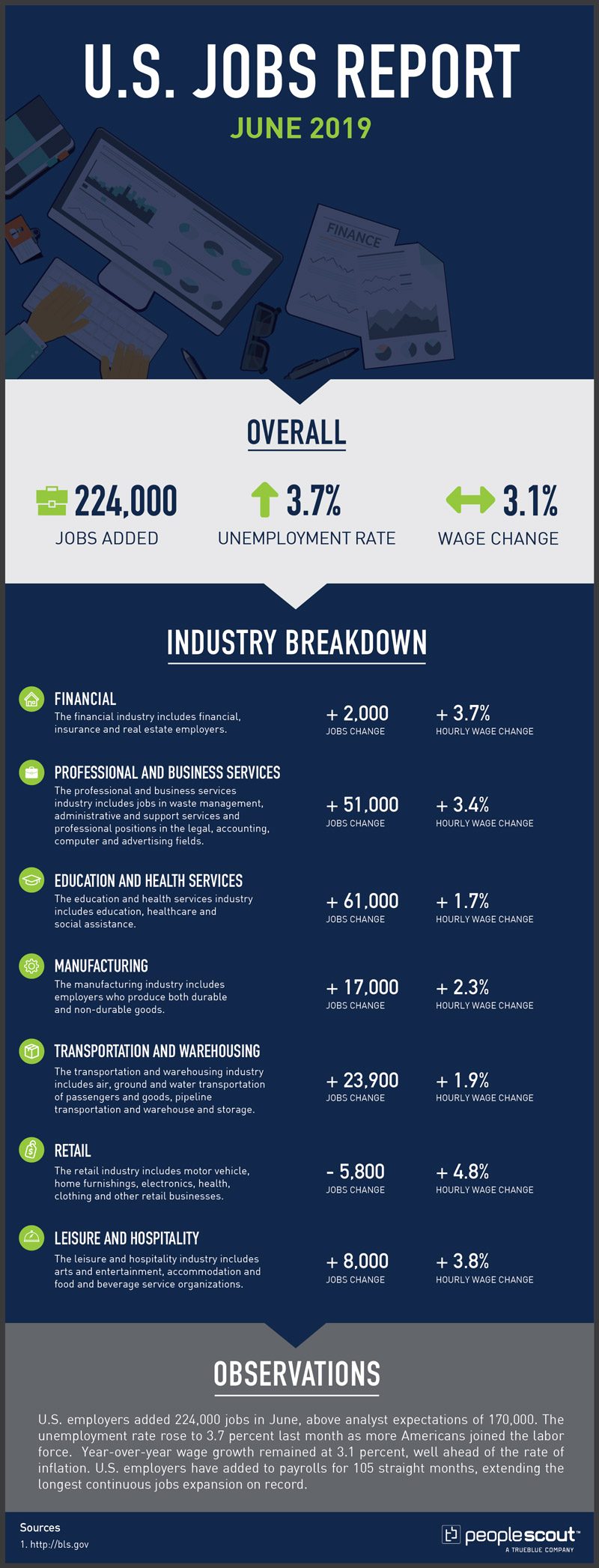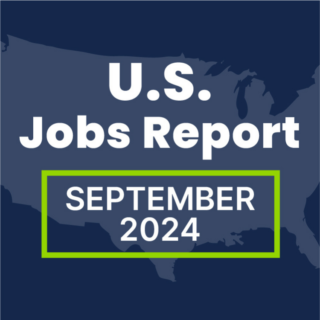The Labor Department released its June Jobs Report which shows that U.S. employers added 224,000 jobs in June, beating analyst expectations. The unemployment rate increased to 3.7% last month. Year-over-year wage growth remained at 3.1%, well ahead of the rate of inflation. U.S. employers have added to payrolls for 105 straight months, extending the longest continuous jobs expansion on record.

The Numbers
224,000: The economy added 224,000 jobs in June.
3.7%: The unemployment rate rose to 3.7%.
3.1%: Wages increased at a rate of 3.1% growth over the last year, the same rate as last month.
The Good
224,000 new jobs were added to the economy adding to the longest continuous job expansion in US history. The unemployment rate increased to 3.7%, but for a positive economic reason, more Americans joined the labor force. Year-over-year earnings remained at a solid 3.1% significantly beating the latest reported inflation rate of 1.8% as measured by the Consumer Price Index (CPI).
June hiring was led by significant gains in the healthcare sector, which added 50,500 jobs, and in transportation and warehousing. The manufacturing sector, which has not seen strong increases for much of the year, added 17,000 jobs last month. Construction firms posted 21,000 new employees in June.
The Bad
Despite the strong gains in June, there is evidence that the rate of job growth is slowing. Employment growth has averaged 172,000 per month so far this year, compared with an average monthly gain of 223,000 in 2018. The broader measure of unemployment and underemployment which includes those who are too discouraged to look for work, plus Americans working in part-time jobs but who want to work full-time, rose to 7.2% in June from 7.1% in May.
The retail sector shed jobs in June as the brick and mortar retail apocalypse continued. As retail businesses shutter, related jobs such as security, warehousing and maintenance may also be adversely impacted in the coming months.
Prime working years are considered to be from the ages of 25 to 54. In June, 79.7% of those in this age group were employed, down from 79.9% in February and well below the record high of 81.9% in April 2000. If this downward trend continues, there may be significant challenges in the nation’s talent supply in the years to come.
The Unknown
The rate of those voluntarily leaving their jobs or “quit rate” has remained unchanged at 2.3% for nearly a year. Even though job openings have eased somewhat, the number of unfilled positions remain near historic highs. While the number of US job openings and the number of unemployed reached its widest gap ever according to reports released last month, employers cannot rely solely on those without work to fill their talent needs. It is unclear if the rate of workers voluntarily leaving their jobs, presumably for new ones, will increase in the near future.




